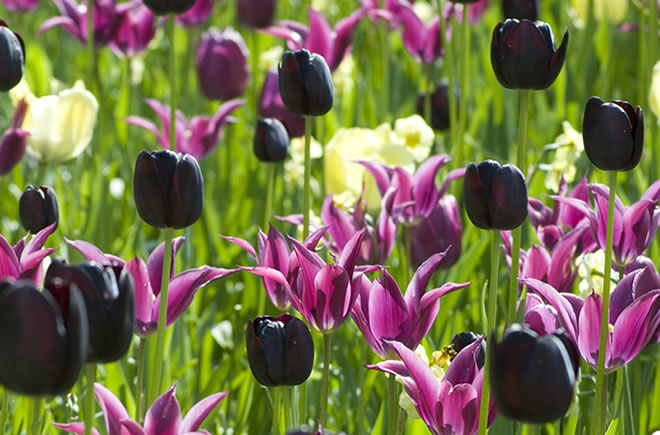
Geert Hageman - Breeding A Black Tulip

The Black Tulip is a story of myth and legend. For centuries, Dutch Tulip growers labored to find or breed this exclusive flower. The closest attempt occurred relatively recently, from a grower and hybridizer from the northern part of Holland.
On February 18, 1986, shortly after midnight, Dutch grower Geert Hageman from Oude Niedorp, a village in the north of Holland, made a final round through his greenhouses. For days, he had been waiting nervously for thousands of Tulips to come into bloom, the result of a new and promising cross-fertilization project. Outside, the temperature was far below zero, but in the greenhouse he maintained a consistent 20 degrees Celsius (68 degrees Fahrenheit). It would not be long before the first green buds would start to bloom and show the ultimate color of the flower.
Geert‘s eyes looked along the rows of Tulips, and thought of all the work he had done in the last ten years. He had one goal - to cultivate a Black Tulip.
He wasn't the first to try. Time and again, growers had cross-fertilized purple Tulips with other dark Tulips, but the result rarely went beyond a violet hue. Geert was aware of how small his chances were. Like so many before him, he seemed to be chasing a myth akin to the alchemists of old.
The myth had started in 1850, spreading throughout the world thanks to a novel written by Alexander Dumas called ‘La Tulipe Noire’, or 'The Black Tulip'. Geert had read the book as a young boy and found himself immediately fascinated. In 1891, a well-known grower, Krelage, had claimed success with a breed named 'La Tulipe Noire' after the book, but it was more purple than black. Other attempts would follow. The ‘Queen of Night’, registered in 1944, is dark but primarily aubergine colored. ‘Black Parrot’ has a purple hue and still is not 100% black.
Throughout the seventies, Geert Hageman saw these attempts as a starting point. He crossed ‘La Tulipe Noire’, ‘Black Parrot’, ‘Black Beauty’ and ‘Yokohama’ in as many combinations as possible, and in 1979 he collected the seeds from 20 ‘mothers’, producing one thousand viable seeds, which he then had sown in coded seed trays.
Years later, on that late February night, the individual seeds would flower for the first time in the greenhouse. Hageman once more cast his eyes over the Tulips, and in the middle of all the foliage he spotted a small, shining very dark Tulip bud. Could it be? Both no and yes - the Tulip, which would go on to be called 'Paul Scherer', was darker than any before it. However, it still retains a purple hue, and so the search continues to this day.

